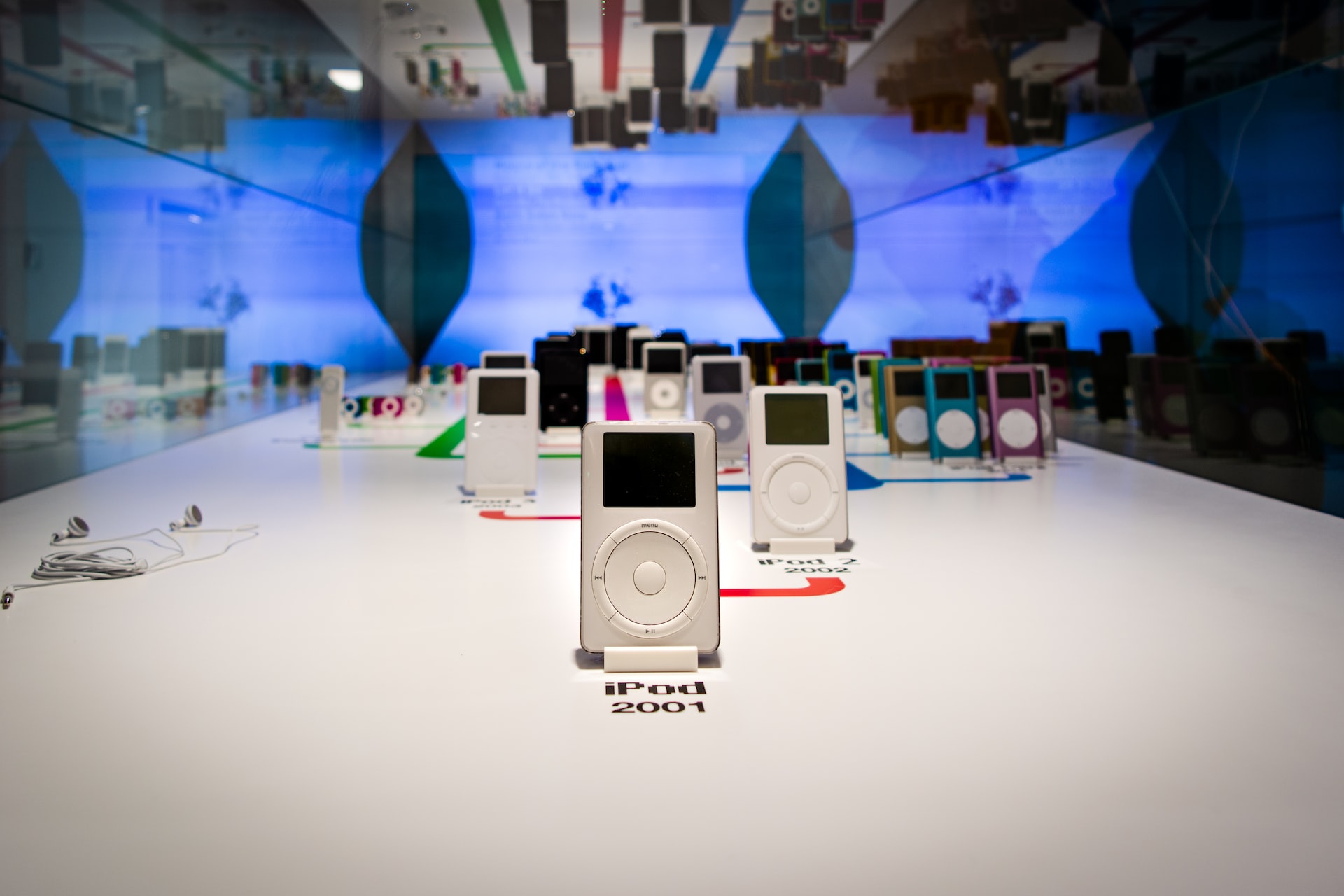
Celebrating the History of the iPod in Honor of its Retirement
July 19, 2022 - Emily Newton
Revolutionized is reader-supported. When you buy through links on our site, we may earn an affiliate commision. Learn more here.
On May 10, 2022, Apple announced that it was discontinuing the iconic iPod product line. The newest iteration of the iPod, from 2019, will be the final iPod Apple produces. While few found this news surprising, it is bittersweet in a way. The iPod forever changed personal tech and digital music. Without the iPod, we might have never gotten the iPhone, arguably the most popular piece of technology in human history. So, this is a look back at the iconic history of the iPod, in celebration of its retirement.
The Birth of a Tech Icon
Today, it is hard to imagine that the iPod saw heavy criticism at first. Apple is such a legendary brand today that every product launch is a highly-anticipated event. When the iPod first debuted, though, many found it difficult to see what separated it from any other MP3 player. Apart from the price tag, it seemed much the same.
Steve Jobs knew what he was doing, though. In the reveal presentation, Jobs told his audience, “no one has really found the recipe yet for digital music”. While there were plenty of music players on the market in 2001, none of them emerged as the market frontrunner. All had one issue or another.
Apple designed the iPod to meet this challenge with the highest song capacity, a highly-portable package and the lowest price per song. The original iPod was the size of a deck of playing cards and could hold 1,000 songs. While the iPod cost almost $400 dollars at launch, it certainly stood out from everything else on the market.
At first, public responses to the iPod were extremely mixed, as evidenced in forum reactions to Steve Jobs’s 2001 announcement presentation. Critics claimed that it was too expensive and nothing new. Some even called Steve Jobs crazy for thinking the little device would take off at all. They had no idea how wrong they were.
The Golden Era of the Legendary iPod
By 2003, the 3rd generation of the iPod was on the market and the whole product line was well on its way to becoming a cultural icon. Apple made software and hardware changes to make the iPod compatible with Windows PCs as well as their Mac computers. The white earbuds that shipped with the iPod had become a cultural staple, to the point where muggers would target people wearing white earbuds in the hopes of stealing their iPod. Oprah even added the iPod to her 2003 list of Favorite Things and famously gave away dozens of the expensive MP3 players to her live audience.
The iTunes music store launched with a couple hundred thousand songs at the staple $0.99 price. By the end of 2003, users had downloaded over 25 million songs from iTunes, despite skepticism that it wouldn’t be able to compete with “free” pirated music. This was an important turning point in digital music and a key pioneering moment for Apple.
Music piracy was a major issue in the music industry in the 90s and early 2000s. Apple argued that if it was cheap and easy to pay for music, though, most people would. The iTunes store proved them right. Users at the time heralded the iPod for its sheer simplicity and convenience. It was extremely easy to use and great at its intended function. The iTunes store put everyone’s favorite music in one easy-to-access spot. Apple even pioneered the “shuffle” function in digital music, which you can see universally today!
Over the next few years, the iPod hype exploded. Apple diversified its product lineup, launching the iPod Mini, the iPod Nano, the iPod Shuffle, and new generations of the original iPod. New versions of the iPod featured color displays that users could play movies and games on, hinting at the role the smartphone would later play as a multi-purpose media player. By 2005, Apple had sold over 10 million iPods worldwide. Despite initial skepticism, Apple’s little MP3 player had solidly taken its place as the king of the digital music world.
The iPod Touch and the Beginning of the End
In 2007, Steve Jobs unveiled two devices that would change the history of technology: the iPod Touch and the iPhone. The iPod Touch was the first iPod to feature the now-standard full touchscreen. It expanded the features and capabilities of the iPod well beyond a simple music player. Users could access a whole new world of touchscreen games, plus apps for all kinds of things like notetaking, messaging, surfing the Internet, and even taking photos with a built-in camera.
Even when Apple launched the iPod Touch, they were already beginning the path toward retiring the iPod. The iPhone was clearly the next step, taking the technology of the iPod Touch and folding into it the only other device that everyone carried in their pocket: their cellphone. Of course, the iPod Touch was still a massive hit. In fact, iPod sales peaked in 2008, with almost 60 million units sold that year alone.
Apple produced 7 different generations of the iPod Touch over the product’s 12-year lifespan. It bridged the gap between the now-retro aesthetic of iOS 6 and the much sleeker iOS 7, which today’s iOS design aesthetics are still based on. This is a testament to the cultural power that Apple has developed, since many people originally didn’t like the look of iOS 7 when it released in 2013. By that time, over 400 million iPods had sold worldwide, but sales were beginning to decline, giving way to the era of the iPhone.
The History of the iPod Lives On
By 2014, Apple finally discontinued the original iPod. The iPhone had become the new standard, combining the modern cellphone and personal MP3 player to kickstart the smartphone market. The iPod Touch remained popular for a few more years, though, particularly with kids as well as people who were reluctant to buy a smartphone for one reason or another. By 2022, though, the iPod has become completely eclipsed by smartphones. Anyone still hanging onto an iPod is probably considering sending it to electronics recycling or trying to sell it on a vintage resale site.
It is safe to say that the iPod paved the way for the iPhone, though. Apple remains the smartphone market leader, with well over 2 billion iPhones sold worldwide since the product lineup first launched. Apple’s iPhones have shaped smartphone design for years now, but the iPod Touch was where the sleek design of the iPhone started.
The history of the iPod lives on in today’s massively popular iPhones. You can still find that monumentally popular MP3 player in the music apps found on every single smartphone today. While the iPod has certainly become obsolete, it will be remembered as one of the most influential pieces of technology in modern history.
Revolutionized is reader-supported. When you buy through links on our site, we may earn an affiliate commision. Learn more here.
Author
Emily Newton
Emily Newton is a technology and industrial journalist and the Editor in Chief of Revolutionized. She manages the sites publishing schedule, SEO optimization and content strategy. Emily enjoys writing and researching articles about how technology is changing every industry. When she isn't working, Emily enjoys playing video games or curling up with a good book.




